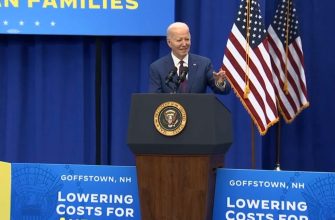Clifford Walters said he was only trying to save a struggling newborn bison when he made a sudden decision to push it up from a riverbank in Yellowstone National Park.
But Walters’ encounter with the animal on May 20 landed him in federal court, where he pleaded guilty on Wednesday to one count of feeding, touching, teasing, frightening or intentionally disturbing wildlife.
Walters was ordered to pay a $500 fine, a $500 community service payment to the Yellowstone Forever Wildlife Protection Fund, a $30 special assessment and a $10 processing fee, the U.S. Attorney’s Office for the District of Wyoming said in a statement.
Walters, 78, represented himself in court and said in an interview today that he believed the outcome was fair.
“The fine could have been a lot worse,” he said, adding: “I would have paid that much money to save the calf’s life.”
Walters, of Hawaii, said he and his wife had been traveling through Yellowstone National Park in Wyoming, when they stopped to watch a herd of bison crossing the Lamar River, in the park’s northeast corner.
Walters said his wife had been recording a video of the herd when he noticed a newborn calf with its umbilical cord still attached struggling on the bank, unable to get its rear legs onto dry land.
“It was in the water, begging for help to get out,” he said. “It had been swept downstream.”
Walters said he reacted instantaneously.
“I didn’t discuss it with my wife as I took off down the embankment,” he said. “I couldn’t stand seeing the calf die.”
He said he pushed the calf up the embankment and into an area where cars were parked.
“I thought, ‘If I can get him out of the water, maybe someone will come back and save him,’” Walters said. “The calf was drowning, and it had absolutely no chance if I hadn’t done that.”
But Walters’ plan did not work. According to the statement from the U.S. attorney’s office, visitors saw the calf approach and follow cars and people. Park rangers repeatedly tried to reunite the animal with the herd, but their efforts were unsuccessful, the statement said.
Park staff members then euthanized the calf because it had been abandoned by the herd and was “causing a hazardous situation by approaching cars and people along the roadway,” the statement said.
Later, Walters heard on a Montana radio station that park officials were looking for a man — believed to be in his 40s or 50s — who had pushed the bison, and said: “That’s me.”
He said he went to a ranger station in Yellowstone to turn himself in. Citing a violation notice issued to Walters, the U.S. attorney’s office said: “There was nothing in the report that revealed Walters acted maliciously.”
In its statement, Yellowstone National Park reminded visitors that approaching wild animals could “drastically affect their well-being and, in this case, their survival.”
Bison have lived in the area of Yellowstone National Park since prehistoric times. Although their numbers dwindled to about two dozen in 1902, conservation efforts helped restore the population, which now fluctuates from about 2,300 to 5,500, according to the park.
Wild and unpredictable, the shaggy, humped animals have been known to gore park visitors. Yet tourists have often approached the animals, ignoring repeated warnings by officials to stay away.
In 2018, a man was arrested after taunting a bison at Yellowstone. In 2016, a bison calf was euthanized after it was placed in the back of an SUV and rejected by its herd. And in 2015, a woman was injured while trying to take a selfie near a bison.
Park regulations require visitors to stay at least 25 yards away from all wildlife, including bison, elk and deer, and at least 100 yards away from bears and wolves.
Walters said that he acknowledged that his actions on May 20 were illegal.
“This was an act of compassion,” he said. “I really did not think that it would be a crime to save the baby bison. The event happened so quickly, I acted from my heart.”
This article originally appeared in The New York Times.







